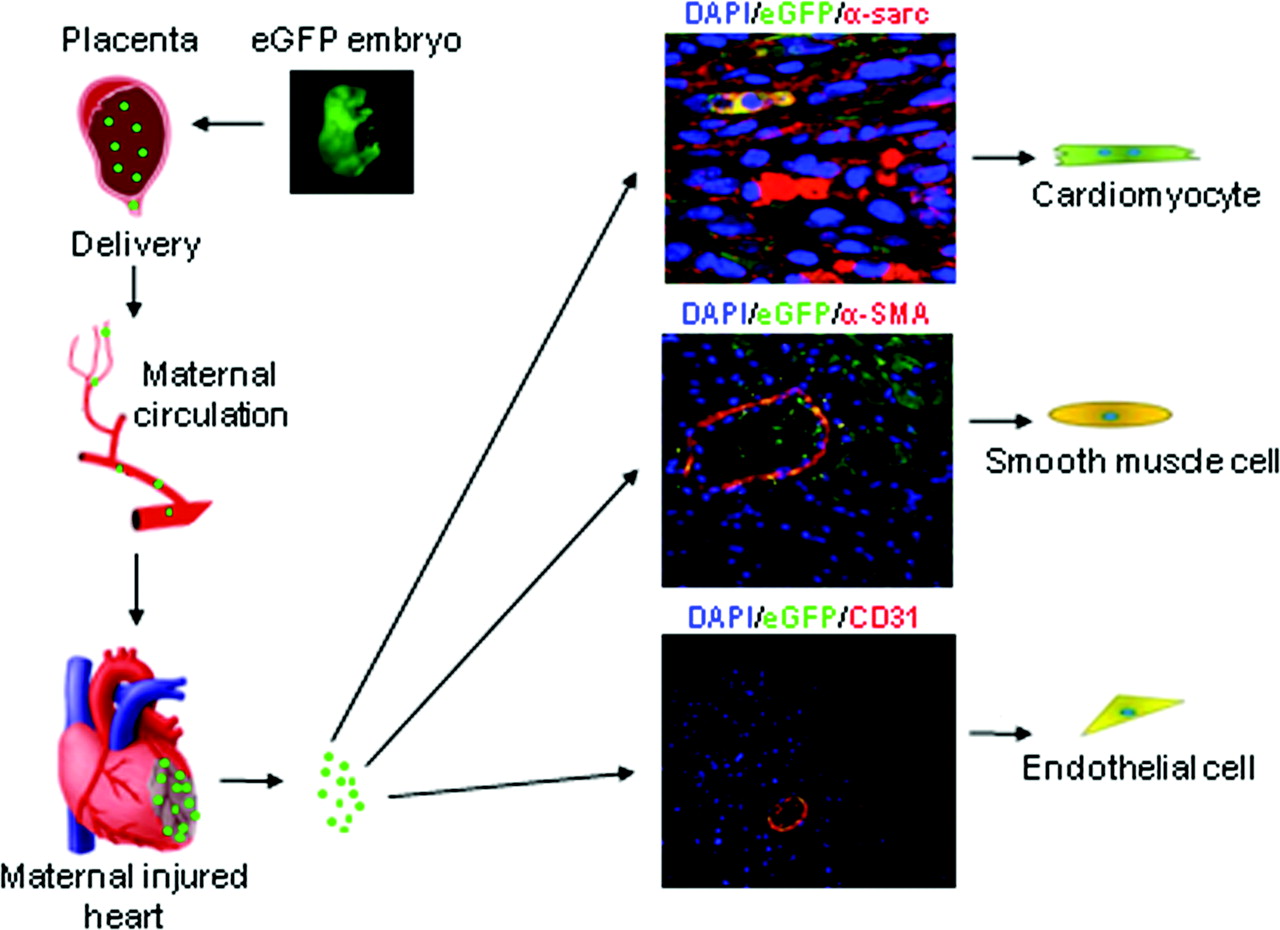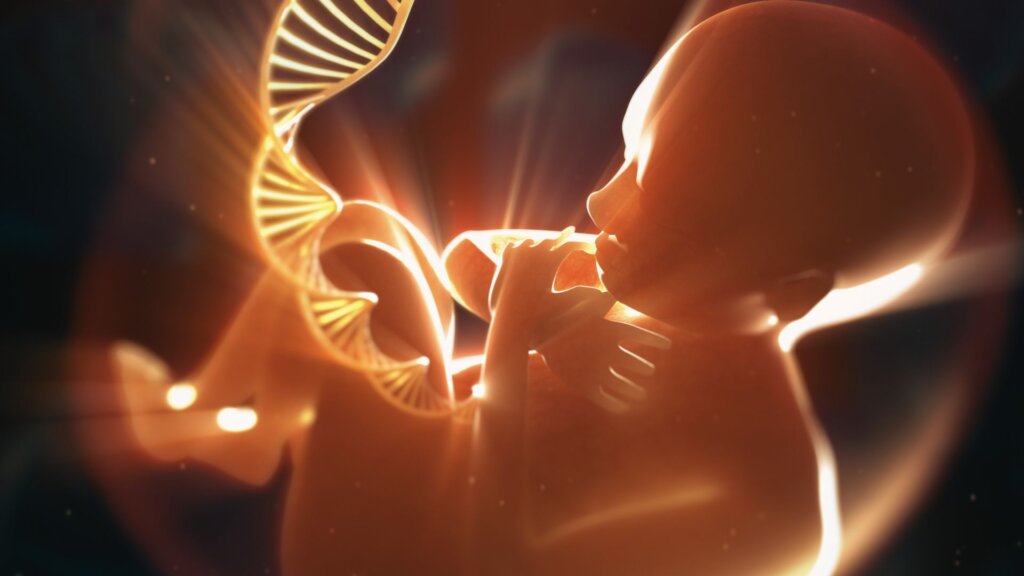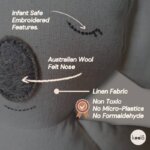In the journey of pregnancy lies a captivating phenomenon known as fetal microchimerism. This phenomenon, where fetal cells persist within a mother’s body, weaves a bond that defies time. Recent studies, including those involving mice, shed light on the potential for these cells to aid in healing the mother’s organs, adding depth to the mother-child relationship.
Consider the intriguing 2015 Circulation Research study, which tracked fetal stem cells from placenta to mother’s heart. These cells seamlessly merged with injured cardiac cells, hinting at their role in safeguarding and healing the maternal heart.

Cells of fetal origin engraft within the maternal heart and give rise to diverse cardiac lineages, including cardiomyocytes, smooth muscle cells, and endothelial cells.
While not a new concept, fetal microchimerism continues to captivate scientists. Decades of research confirm the endurance of fetal cells within maternal tissues. Known as fetomaternal microchimerism, this concept underscores the profound connection formed during pregnancy. Fetal microchimeric cells (FMCs) find refuge in maternal bone marrow, journeying through tissues to leave an indelible impact.

Across the years, hundreds of studies reinforce the presence and reality of this phenomenon. A 1996 study in Proceedings of the National Academy of Sciences demonstrated that genetically distinct cells endure even 27 years after birth. FMCs silently traverse beyond blood, reaching maternal organs like bone marrow, skin, and liver – a silent conversation between mother and child.
While studies in mice provide a foundation, the mechanics and broader implications of fetal microchimerism still hold mysteries. Yet, these glimpses into potential maternal healing and the profound mother-child bond beckon us to explore anew within the wondrous realm of pregnancy’s mysteries.
>> Like this article? We bet you will also enjoy reading about HEX and the effects sniffing your baby’s head has on behaviour! Read the science about sniffing baby’s head here!
References
Bianchi, D. W., Zickwolf, G. K., Weil, G. J., Sylvester, S., & DeMaria, M. A. (1996). Male fetal progenitor cells persist in maternal blood for as long as 27 years postpartum. Proceedings of the National Academy of Sciences U.S.A., 93(2), 705-708. https://doi.org/10.1073/pnas.93.2.705
Cirello, V., & Fugazzola, L. (2016). Novel insights into the link between fetal cell microchimerism and maternal cancers. Journal of Cancer Research and Clinical Oncology, 142, 1697-1704. https://doi.org/10.1007/s00432-015-2110-3
Dawe, G. S., Tan, X. W., & Xiao, Z. C. (2007). Cell migration from baby to mother. Cell Adhesion & Migration, 1(1), 19-27. https://doi.org/10.4161/cam.1.1.3753
Kara, R. J., Bolli, P., Karakikes, I., Matsunaga, I., Tripodi, J., Tanweer, O., … Chaudhry, H. W. (2012). Fetal Cells Traffic to Injured Maternal Myocardium and Undergo Cardiac Differentiation. Circulation Research, 110, 82-93. https://doi.org/10.1161/CIRCRESAHA.111.249037
Disclaimer: The information provided in this article is for educational purposes only and should not be considered as medical advice. Always consult with a healthcare professional before making any changes to your health routine or treatment.
















































































